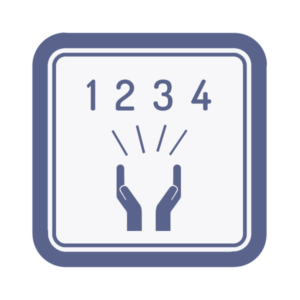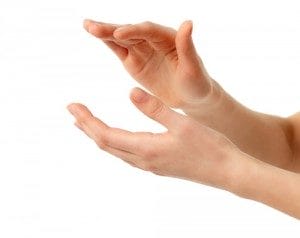
Connect with the Beat
Practise connecting with the beat, the underlying pulse that is the foundation of all future rhythmic learning.
After completing this module: you will be able to hear and clap along with the basic pulse of any song. You will also be able to pick out and clap with the different beats in 4/4 time, which is the most common musical meter.
Music can contain many layers of rhythm competing for our attention. So how do we wade through and find the basic pulse – the beat – that underlies it all?
Module Preview
Contents
- Introduction
- Clapping in Time
- Clapping in Time to Real Music
- Clapping with Instruments
Get your rhythm skills onto a solid foundation by first connecting with the beat, then practising core rhythm principles like the pulse, the downbeat, upbeat, and tempo with the examples and exercises in this module.
Connect with the Beat
For drummers and many musicians, finding the beat is as easy as checking your heartbeat or breathing, but not everyone picks up on the pulse so easily. Maybe you’re that guy who can’t hear the rhythm and has two left feet, or the girl who always finds herself clapping on beats 1 and 3-ish when everyone else is jamming out on 2 and 4. Maybe you are a singer who has perfect pitch but can’t find beat 1…

Clap Power
Clapping hands stimulates the senses, body, and brain, and helps you make the beat a part of yourself. Clapping in time takes ear training skills and a little bit of practice, but it’s not impossible for anyone to learn, however alien it might seem to you at first.
Let’s practice the basics of clapping in time step-by-step:
- Learn how to listen and truly hear what is around you
- Learn how to sense rhythms in your environment
- Clap basic rhythms
- Apply basic clapping to simple instrumental excerpts like the drums, keys, and bass
- Learn about clapping on “2 and 4” and “1 and 3”
- Learn how to clap along with a song
How to Listen
The first step to clapping in time is learning how to listen, really listen.
What this means is that in your everyday life, you take the time to listen and use your ears to extract sounds – specific sounds.
Exercise 1. Quiet
There is rhythm all around you. This can be anything from the sounds of traffic and the city to the quiet of the woods, to the rushing and cyclical pounding of ocean waves on the shore. Birds, insects, weather… all have rhythm. Learning how to discern different pulses within a greater soundscape will help you learn how to properly clap in time and find the beat.
For this first exercise, you will take ten minutes to simply sit still and listen. As you sit:
- Listen for sounds around you
- Try to pull out specific rhythms you might hear in your environment
- See if there is a steady beat, like a backing truck or the chirping of a grasshopper, that you can try to lightly tap your hand in sync with what you hear
As you learn to hear the pulse in your environment, you will be better able to hear it in a piece of music.
Feel the Pulse
Nearly every civilization and society have developed some sort of percussive rhythm in their music, even if they have been isolated from modern society for all time. Part of this is that we have an intrinsic rhythm in our bodies through our heartbeat, even our breathing.

Pulse Point
Exercise 2. Heartbeat
For this exercise:
- Find your pulse on your wrist or neck
- Start counting with your heartbeat 1-2-3-4
- Tap your foot along with your heartbeat
- For a variation, stand up and jog, doing a few jumping jacks, or walk briskly and repeat the exercise
- How has your heartbeat changed?
What does this have to do with real music?
Musical pieces often have several layers of rhythm competing for our attention. Sensitizing ourselves to the pulses in our bodies and environment allows us to ground ourselves in the sound and feeling of a steady beat before we enter into that more rhythmically intensified world.

